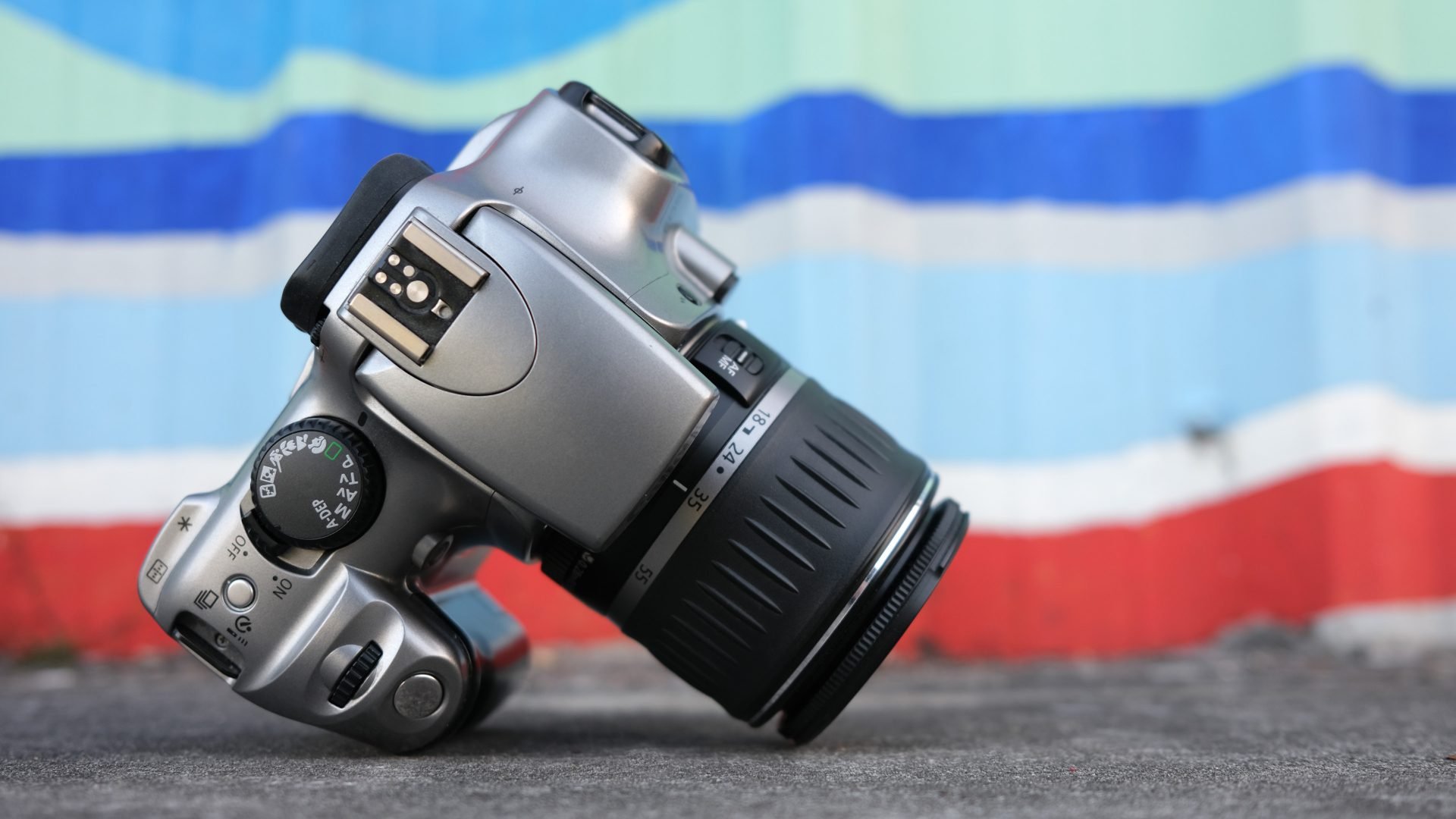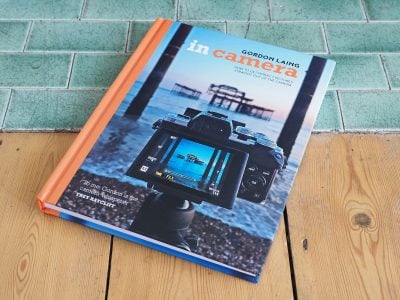Canon EOS 300D Rebel retro review
-
-
Written by Gordon Laing
Welcome back vintage camera lovers and join me as I turn back the clock 21 years to tell the story behind Canon’s first truly affordable consumer DSLR.
Known as the Digital Rebel in North America, the Kiss Digital in Japan, and the EOS 300D pretty much everywhere else, it arrived in mid-2003 at a price of $999 or pounds including a basic kit zoom. I’ll be calling it the 300D in this review, although I’ll show both it and the Rebel version here. As always, my full review is in the video below, but if you prefer to read the written highlights, keep scrolling! Throughout the page I’ll include a selection of holiday snaps I took 20 years earlier.
Check ebay to find vintage gear. Buy used cameras from MPB. Sell your used gear to MPB. Lost, deleted or corrupted photos? I recover mine with Stellar Photo Recovery. PS - if you enjoy my reviews, videos and guides, you can support me my treating yourself to a copy of my In Camera book, an official Cameralabs T-shirt or mug, or by treating me to a coffee! Thanks!The EOS 300D wasn’t Canon’s first DSLR of course. There were several eye-wateringly expensive collaborations with Kodak in the mid-Nineties, followed by the 1D and 1Ds aimed at Pros, and the D30 and D60 aimed at enthusiasts.
But Canon’s imperial DSLR phase began in early 2003 with the launch of the EOS 10D, the first in what would become an enormously popular series targeting the semi-pro market. Not only did it nail a signature look and feel that’s still used today, it became their most affordable model to date costing around $1500 or pounds for the body alone. It looked good, felt good and delivered enviable quality with its 6 Megapixel APSC sensor. We all wanted it, but while 1500 was comparatively cheap for a DSLR at that time, it was still out of reach for many of us.
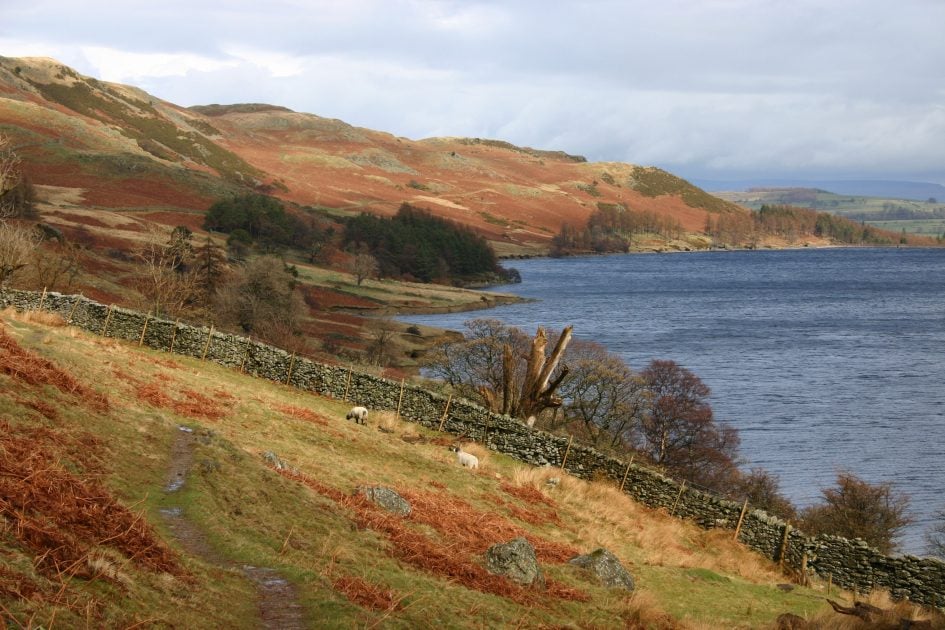
So imagine our surprise and delight when around six months later, Canon announced the EOS 300D, a new budget DSLR that delivered the quality of the 10D, but in a simplified body to meet a $900 or pound body price-point, or just 999 with its new kit zoom. Squeezing-in under a grand was a huge win, allowing the EOS 300D to directly compete against high-end prosumer bridge cameras which until this point were the number-one choice for enthusiasts.
Sure the 300D had a pretty basic feature-set compared to gadget-packed rivals like Sony’s Cyber-shot F828 launched in the same year for the same money. For example, it couldn’t compose with the screen, the kit lens had a shorter zoom range, and there were no video capabilities. But the 300D countered with a substantially larger sensor that was way better in low light, the chance to swap lenses – maybe even use some old ones you had from a film SLR, and the ability to compose and focus through them using a true optical SLR viewfinder.
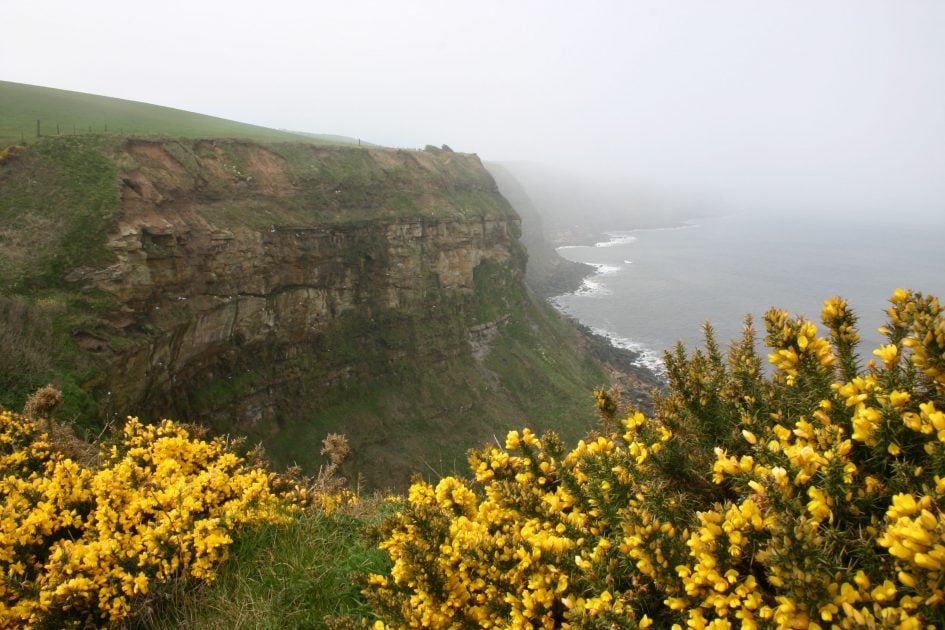
This was the camera that finally converted many of us – myself included – from bridge to DSLR photography. My original 300D had long disappeared, but just over two decades later I bagged this pivotal camera from MPB for just £30, while its original 18-55 kit zoom cost roughly the same again. So join me as I take them for a spin around Brighton in 2024, as well as checking out some of my holiday snaps taken with it back in 2003 and 2004.
Canon’s first cost-saving exercise was apparent the moment you picked up the 300D: the silver-coloured plastic body looked and felt a World-apart from the robust magnesium-alloy shell of the EOS 10D. In your hands, the 10D exuded confidence, while the 300D, well, looked kind of cheap and to me almost felt hollow as if it were unnecessarily large for whatever was inside. That said, some valued its lighter weight and slightly smaller size.
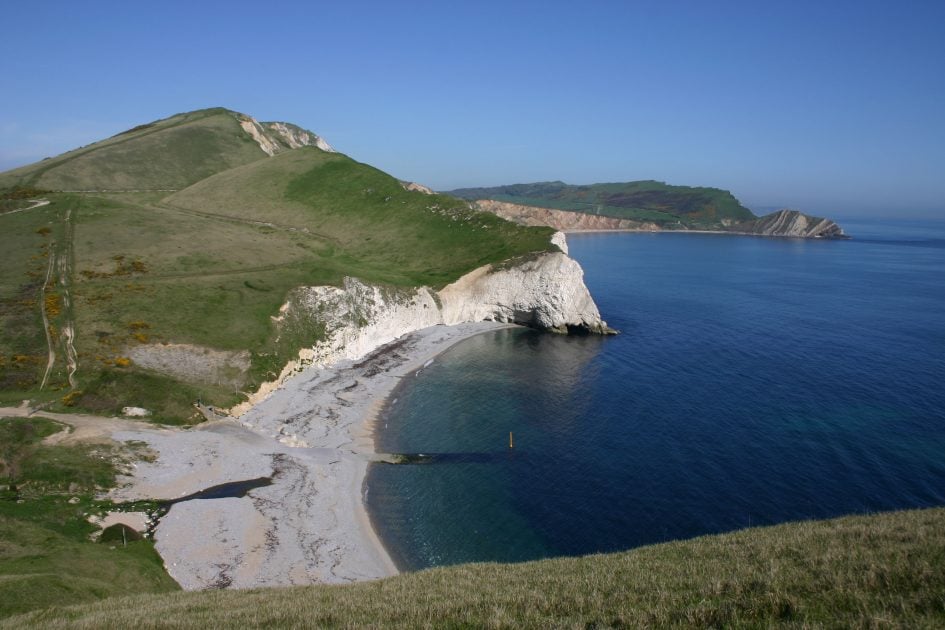
While Canon obviously needed a number of cost savers and differentiators from the higher-end models, they greatly improved the look and feel of subsequent budget models, starting with the 350D or Rebel XT which in 2005 noticeably shrunk while enjoying a glow-up. But back to the chunky OG, which at least sports a substantial grip to wrap your fingers around.
Back in 2003, this was coated in a rubbery material, but two decades later, it’s likely to have turned to a sticky mess. This affects the panel on the left side, as well as the main grip itself. Interestingly while this can be an issue for many cameras of the era, I notice it less so on the double-digit semi-pro EOS series. The answer today is to just clean it all off, leaving a shiny slippery plastic surface, but at least one that won’t attract dust or leave marks on your hands.
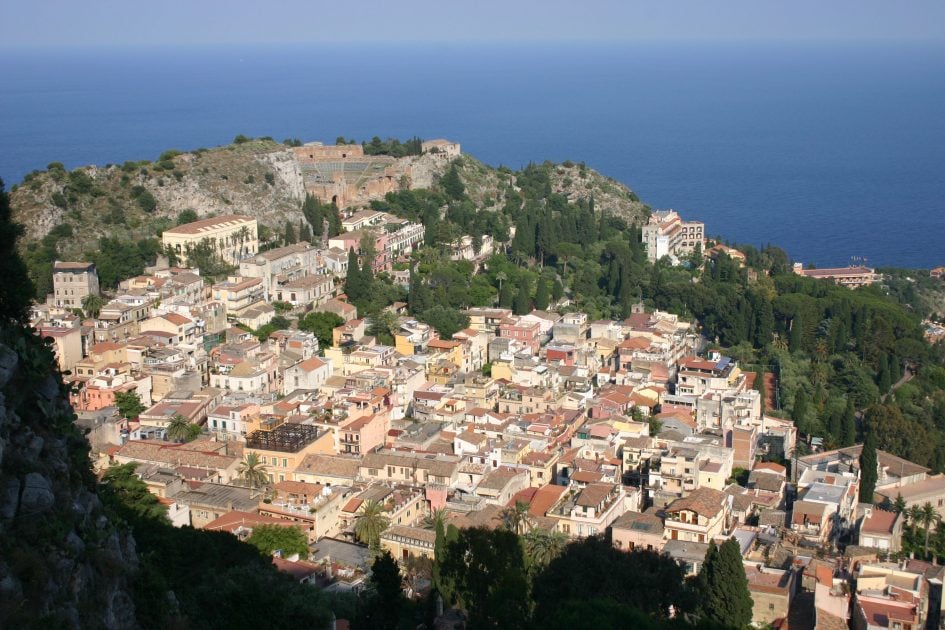
The upper right side is where you’ll find the main exposure mode dial with a satisfyingly clicky power collar around it. The 300D offers six scene presets, as well as green-square Auto, Program, Shutter and Aperture Priority, full Manual and A-Dep modes, the latter allowing some automatic control over depth of field. Shutter speeds range between 1/4000 to 30 seconds with a Bulb option in full Manual.
Alongside the mode dial is a button to cycle between the three drive modes: single, burst and self-timer. The 300D can fire-off up to four frames at 2.5fps. Pretty modest by today’s standards, but the higher-end 10D wasn’t much more capable at 3fps with a nine-frame buffer. Meanwhile positioned behind the clicky shutter release button is a finger dial – the only one on the camera.

Turning to the rear you’ll find two LCD screens: the main 1.8in colour panel with 118k dots is inherited from the 10D and used for menus and playback, while the smaller rectangular screen above it displays shooting information with an optional orange backlight.
This upper screen may be narrow, but packs in a lot of information including the current shutter and aperture, an exposure compensation scale, frames remaining, and icons to indicate the battery life, white balance, drive mode and quality. These screens typically consumed less power and were easier to read than colour panels at the time, so it wasn’t unusual to find them even on high-end compacts. The subsequent 350D also had a similar screen, but by the time the 400D arrived, Canon switched to a single larger and brighter colour panel that was suitable for displaying shooting details as well as menus and playback.
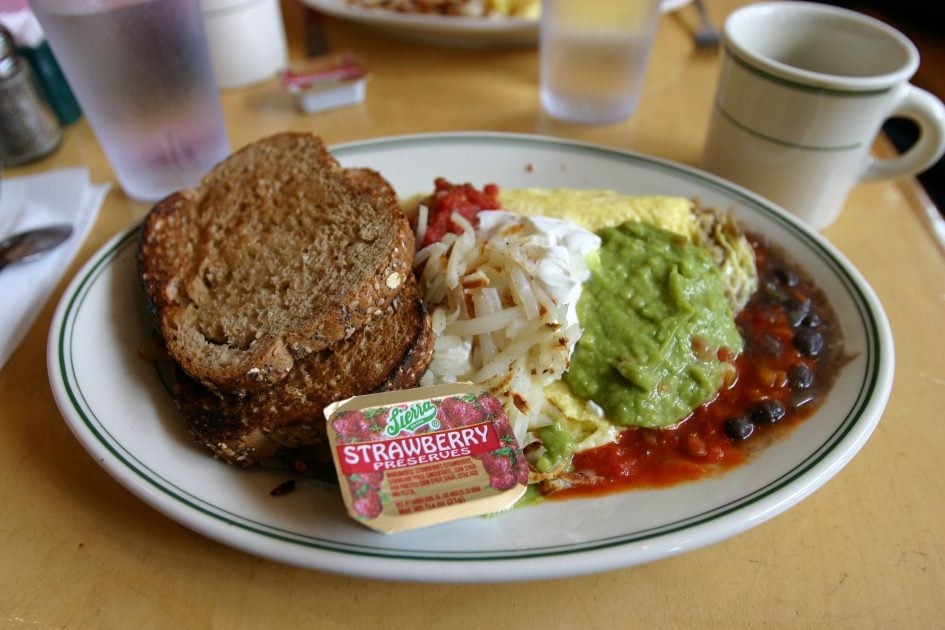
But all these models predated Live View from Canon, so the screens couldn’t be used for composition yet. Meanwhile separate LCD info screens were kept as a differentiator on higher-end bodies, where they were typically found on the upper right side.
To the right of the 300D’s screens are four cross-keys, with up and down accessing the ISO and White Balance settings, adjusted on the small info screen. There was also an exposure compensation button near the screen, as well as exposure lock and AF area buttons in the upper right corner.
What you won’t find on the rear though is one of Canon’s large clicky thumb wheels with a giant OK button in the middle. These were reserved for their higher-end bodies like the 10D, giving them not just two control dials, but one of my favourite camera controls of all time.

Ah well, moving on, composition like most DSLRs at this point was with an optical SLR viewfinder only, which looked through whatever lens you had mounted, allowing you to compose, focus and see whether you’d accidentally left the cap on. But the means by which the light actually got to the viewfinder was another difference with higher-end bodies.
While the 10D featured a traditional penta-prism viewfinder with a nice large and bright image, the 300D introduced a cheaper and lighter penta-mirror system to bounce the light from the lens which delivered a smaller and dimmer view.
And while the 300D appeared to share the same seven point autofocus system as the 10D, at least with the same spread and arrangement, you’ll notice the individual points are indicated by a simple red dot when active, rather than a red square. There’s also no circle indicating centre-weighted metering as there’s no option to adjust the metering mode.
And while it is possible to select an individual AF point on the 300D, or leave it for the camera to choose, it’s worth noting there’s no way to select between single AFS and continuous AFC modes. Some of the scene modes do this for you, such as Sports and Portrait unsurprisingly opting for continuous and single respectively, but in PASM modes you’re stuck with the camera deciding for you depending on whether the subject is moving or not.
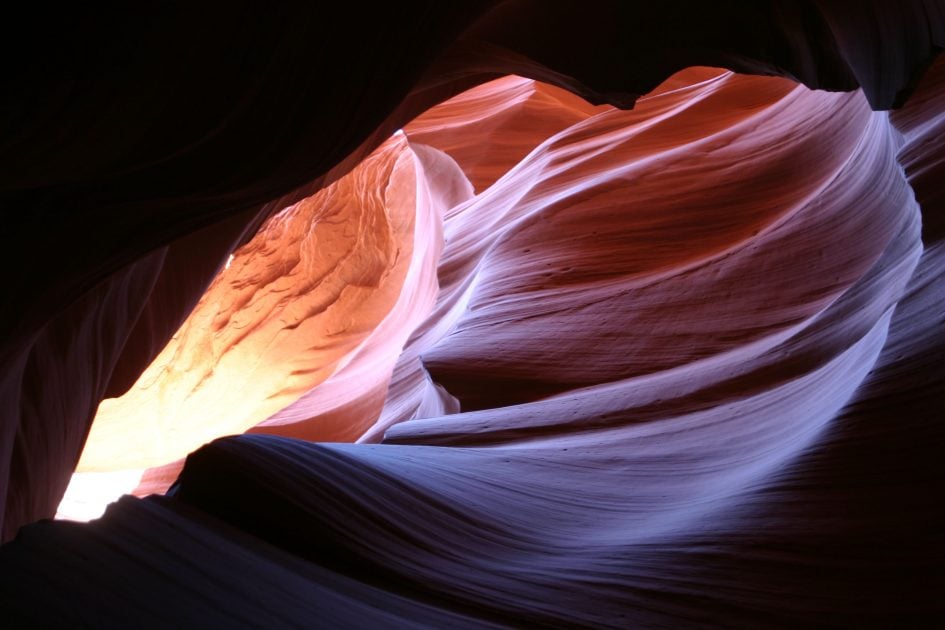
Behind a rubber flap on the left side are the ports: Mini USB for data transfer at 1.1 speeds, a 3.5mm AV output for TV slideshows, and a jack for an E3-type remote accessory. You’d need the 10D for a PC sync port, as well as connecting to an N3-type remote, but there is a hotshoe and a popup flash, activated by pushing a button on the left.
Meanwhile on the grip side a door opens to access a Compact Flash memory card slot that can accommodate standard Type-I as well as thicker Type-II cards, the latter allowing you to use IBM MicroDrives. The camera also supports FAT32 formatting, allowing cards greater than 2GB. But be careful not to open the door while shooting or the camera will power-down and lose any images that may still be in the buffer. To be fair though, this never affected me personally.
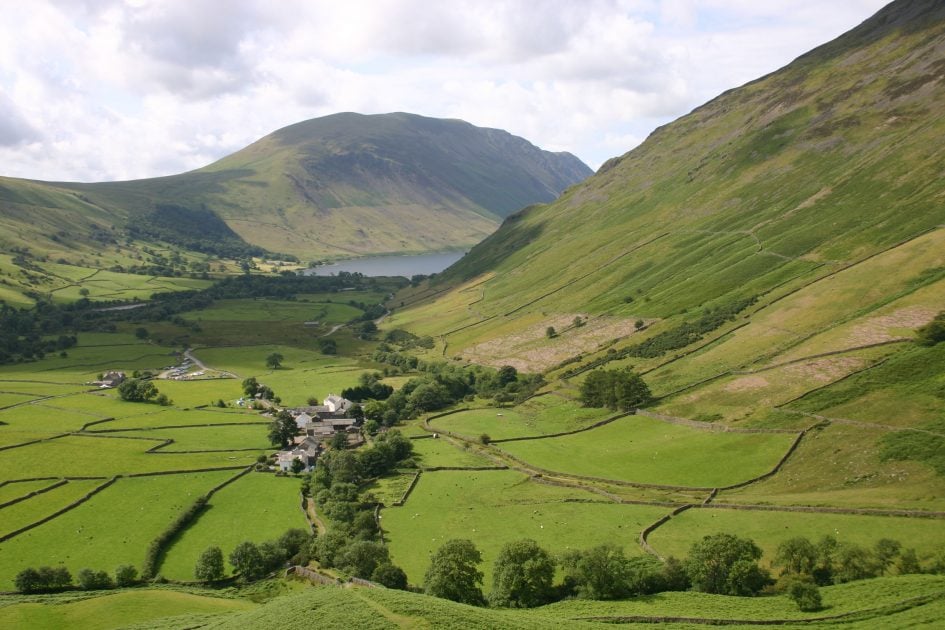
Like many Canon bodies at the time, the 300D was powered by the BP-511 Lithium ion pack which is charged externally using the supplied CB-5L AC charger. To save size and weight on later models in the series, Canon switched to a smaller pack from the 350D onwards, but the BP-511 and mildly-enhanced versions continued to be used on other cameras for many years, so replacement packs are easily available today.
Note if an EOS 300D flashes a C6C or bC error code when you turn it on, don’t be alarmed. This just means the backup battery for the clock and settings has run out and needs replacing. If you push any button you can continue to use the camera as normal, but all settings will return to their defaults and the date and time will be wrong. To replace this backup battery, remove the main battery, then pull out the housing alongside, closest to the door hinge. You can see it uses CR2016 watch-style batteries.
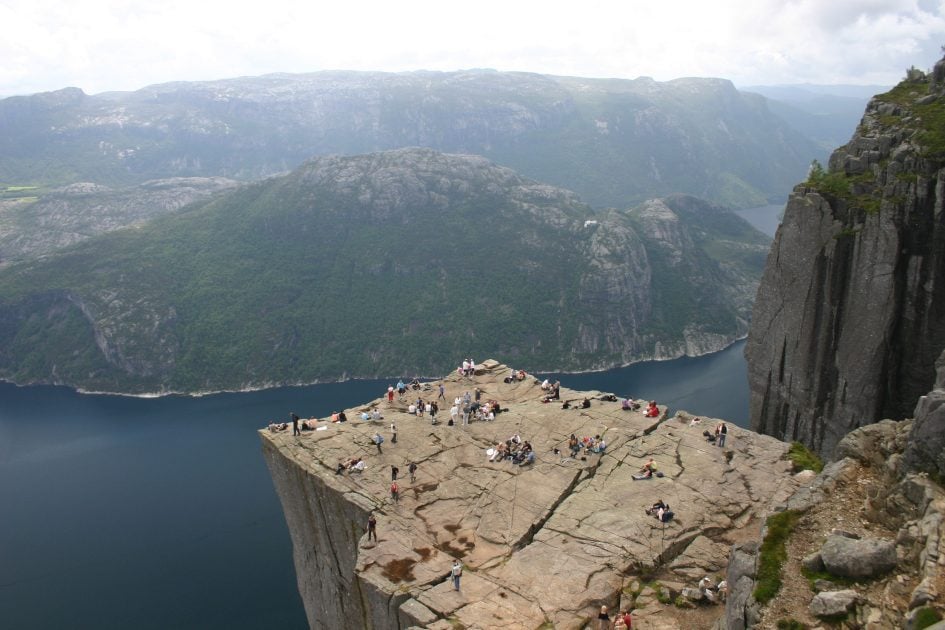
Ok, now onto the sensor and lens mount, the highlights of the EOS 300D and key reasons to buy it over a bridge camera. The 300D’s 6 Megapixel APSC sensor is based on that from the 10D, which in turn was based on that from the D60. These deliver images with 3072×2048 pixels, with two lower resolutions also available, and each in the choice of Fine or Standard JPEG compression. Best quality JPEGs worked out about 3-4MB each.
A RAW mode is also available, but these are recorded seperately and measure about 7MB each. Each RAW file included an embedded medium JPEG for viewing, but a true A RAW+JPEG mode at the full resolution would arrive in this series with the 350D.
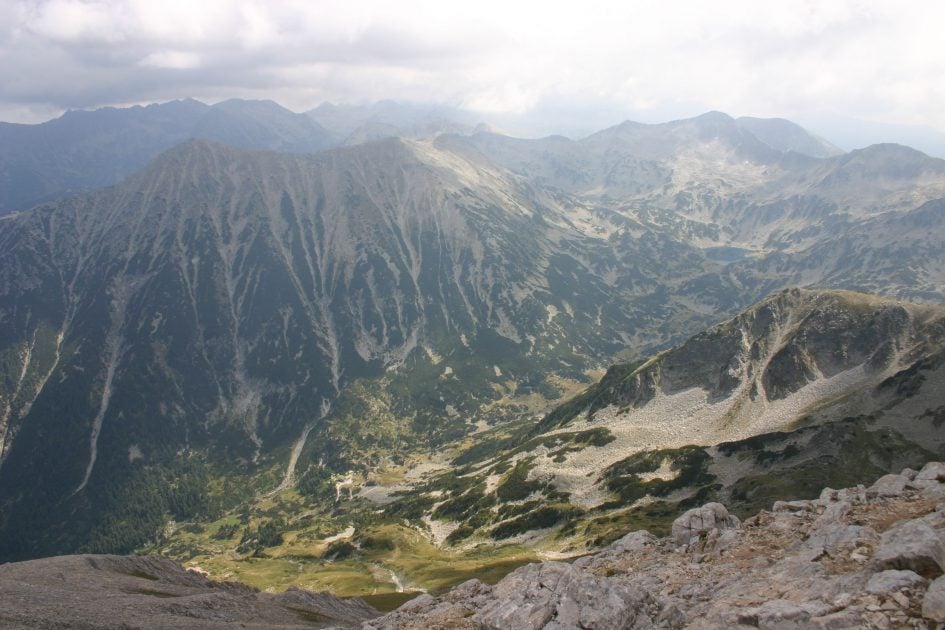
Interestingly, 6 Megapixels actually fell below the 8 Megapixels of typical high-end compacts released in the same year, including Sony’s F828 which again shared much the same price. In a pure resolution test under bright light, these 8 megapixel compacts could actually slightly out-resolve the 300D, but crucially the DSLR packed a considerably larger sensor area.
Sony’s F828 had a 2/3in type sensor which measured 8.8×6.6mm, versus Canon’s APSC sensor which measured 22.7×15.1mm. That gave the Canon sensor almost six times the total surface area, in turn allowing much larger pixels that are way more sensitive in low light while also allowing a greater dynamic range.
Canon 300D sensor: 22.7×15.1mm (342.77mm²) // Sony F828 sensor: 8.8×6.6mm (58.08mm²)
That’s the theory, but to illustrate the difference in practice, I’ve made a new comparison for you over two decades later showing their quality at each ISO. Here’s both cameras at their lowest sensitivities: 100 ISO for the Canon 300D on the left and 64 ISO for the Sony F828 on the right. Already you’ll notice a difference in processing style with the Canon looking softer, but this is mostly down to their default sharpening levels.
Next let’s keep the Canon at 100 ISO and match it with the Sony, where the latter is already showing a slight increase in noise in the shadow areas. Doubling them both to 200 ISO shows the Canon virtually unchanged, while the Sony on the right is showing more noise.
At 400 ISO the Canon on the left is showing some faint noise artefacts, but is considerably cleaner than the Sony on the right which has now become very noisy. At 800 ISO this difference becomes even more apparent. The Canon may be steadily suffering, but nowhere near the smaller sensor in the Sony, and this is its top sensitivity. Meanwhile the Canon on the left goes on to offer 1600 ISO, albeit not the H option of the 10D, and while the image has become notceably softer and noisier, it’s still way cleaner than the Sony.
Now to be fair, you’d only use the same ISOs on both cameras if they were also using the same shutter and aperture, and one benefit of bridge cameras was typically having brighter lenses than DSLR kit zooms. For example the F828 and Canon kit lens at their wide-ends have maximum apertures of f2 and f3.5 respectively, so that allows the Sony to deploy ISOs a stop and a half slower under the same conditions and shutter speed.
Meanwhile at the long-end of the Canon kit lens, the Sony F828 is roughly two stops brighter at f2.8 vs f5.6, allowing it to use, say, 100 ISO when the Canon was at 400. But even comparing 400 ISO on the Canon vs 100 ISO on the Sony shows the latter still being noisier. And if you can fit a brighter lens on the Canon to keep ISOs down, the benefit becomes even greater.
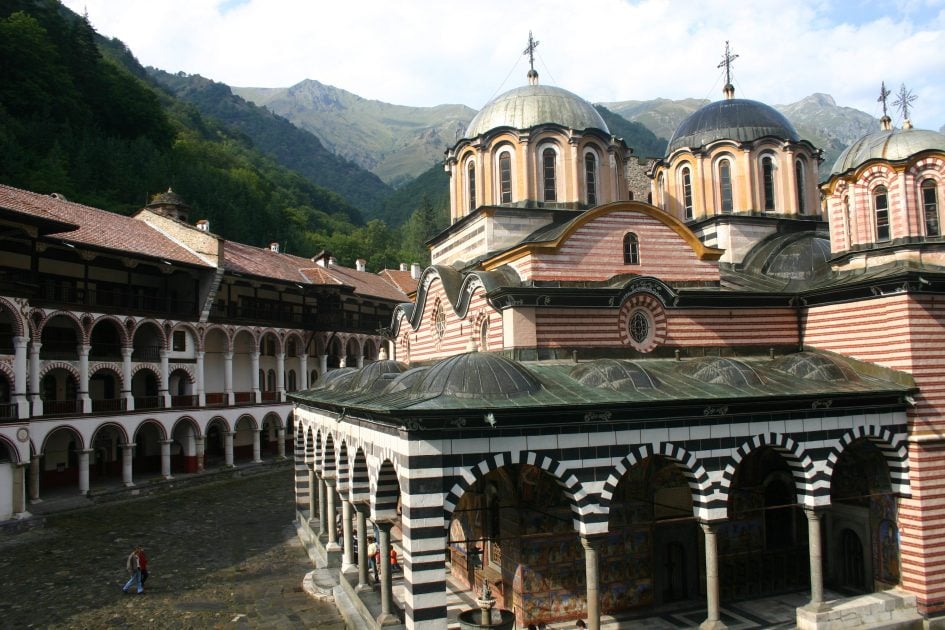
Which brings me to the lens mount, the second killer feature on the 300D. By utilising an EF bayonet, the 300D could use any lens in the enormous EF catalogue, a vast array of Canon’s own and third party options from ultra-wide to super-telephoto, from cheap to enormously expensive. All would work on the 300D, although as with other Canon APSC models, their field of view would be reduced by 1.6 times.
Since this meant lenses designed for larger full-frame sensors or 35mm film weren’t strictly necessary, Canon developed a new series specifically designed for the smaller APSC-sized sensors only. Since they didn’t need to be optimsed for larger formats, they could be smaller, lighter and cheaper.
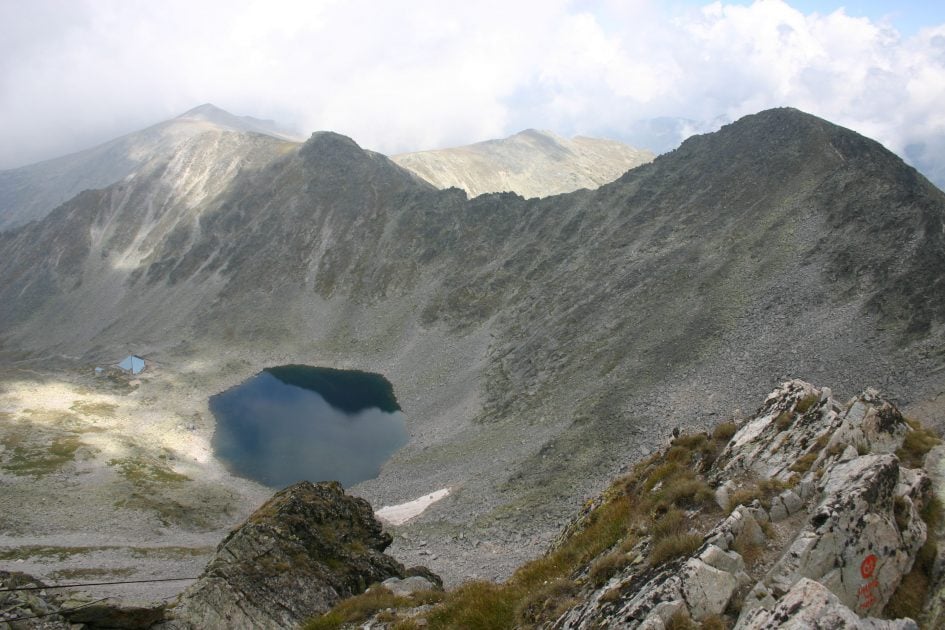
Canon called them EF-S lenses and employed a slightly modified bayonet mount to prevent them from being used by accident on bodies designed for larger formats. Unfortunately this prevented their use on existing DSLRs with APSC sensors, including the 10D, but an EF-S bayonet was fitted to all subsequent DSLRs with APSC sensors.
The first EF-S lens was the 300D’s kit zoom, the 18-55mm f3.5-5.6, an unashamedly budget design with a front element that rotated noisly when focusing, making the use of polarising or graduated filters frustrating to say the least. The roughly 3x range was also fairly modest, taking you from an equivalent of 29mm to 88mm. Compare that to the 7x range of Sony’s F828, starting at a similar 28mm, but ending at a way tighter 200mm. As I mentioned a moment ago, Sony’s lens was also brighter, compensating a little for the smaller sensor behind it.
But if you didn’t like Canon’s kit lens, no problem! Just mount something different! One of the most affordable alternatives that delivered something genuinely different was Canon’s EF 50mm f1.8, roughly matching the long-end of the kit zoom for coverage but with a far larger aperture, over three stops brighter. I have one of the more recent versions.
Here’s a portrait taken with the 18-55 kit zoom at 50mm where the aperture if f5.6 and there’s not much blurring behind me in the background. Now lets switch it for an EF 50mm f1.8 at f1.8, where the background has become much blurrier thanks to the shallower depth-of-field. This was something way beyond most bridge cameras when shooting portraits at a similar distance.
Here’s another comparison starting with the 18-55 at 50mm f5.6, before switching to the EF 50mm f1.8 at 1.8 from the same distance, where the bokeh blobs have become huge. I took both shots from the closest focusing distance of the 50 1.8.
Now to be fair, the 18-55 can actually focus a lot closer, so here’s how it looks from its closest focusing distance, which in turn has enlarged the blobs, albeit not to the same degree as the 50 1.8 had. Plus the 50 can achieve big blobs from a more reasonable distance.
Either way it’s clear the different kind of photos you can get with just one extra lens, and that’s the big deal about removable lens cameras versus those with fixed lenses. You can literally fit anything you want on them to enjoy a World of different effects.
So again while Sony’s F828 may have focused even closer for greater macro reproduction, you could simply invest in a dedicated macro lens for a DSLR and enjoy 1:1 reproduction or even greater. All these lenses of course added up in cost, but represented a system you were investing in, rather than a single purchase of a fixed lens camera.
Canon EOS 300D Rebel verdict
It’s no exaggeration to describe Canon’s EOS 300D or Digital Rebel as ground-breaking both when it was new in 2003 and looking back two decades later. As the most affordable DSLR to date and crucially one that squeezed-in under a grand including a kit zoom, it was the model many enthusiasts had been waiting for, allowing them to finally graduate from compacts to a proper camera.
At last they had the large sensor they always wanted, the chance to swap lenses, and compose through them using a proper SLR viewfinder. Sure, the cropped sensor may have effectively multiplied all focal lengths by 1.6x, but it was a small price to pay, and besides, dedicated ultra-wide zooms were on their way.
The large sensor not only delivered genuinely lower noise and higher dynamic range than rival compacts, but provided the chance for much shallower depth-of-field effects when coupled with suitable lenses. In particular pairing the 300D with a thrifty-nifty-50
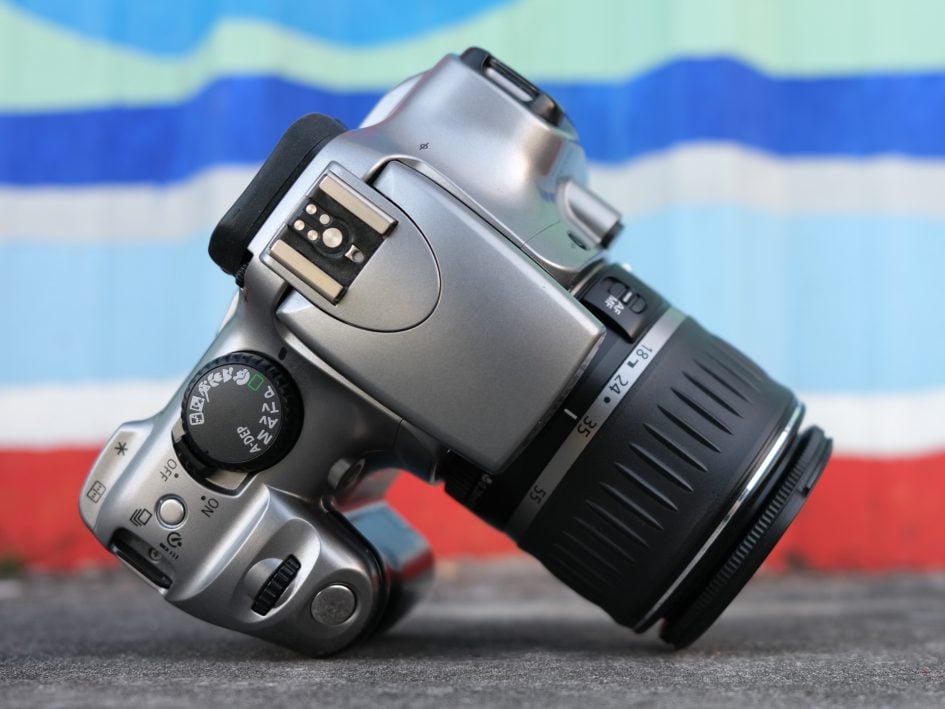
It wasn’t perfect by any means though. The cost of the large sensor, not to mention avoiding stepping on the toes of the higher-end double-digital models, meant the 300D was lacking in both build quality and features.
Typical prosumer bridge cameras of the day offered longer zooms with brighter apertures and closer focusing, not to mention slightly higher resolutions, in some part compensating for their smaller sensors, along with movie modes and the chance to compose with tilting screens or electronic viewfinders. Models like Sony’s F828 could even shoot in complete darkness or be temporarily modded to full-spectrum imaging with nothing more than a strong magnet.
But the potential of a large sensor and the chance to swap lenses proved irresistible to photographers, with the 300D kicking-off what would become a hugely successful run of budget DSLRs that soon killed-off the prosumer compact category. Canon alone released a new budget DSLR in this three-digital series almost every year until the EOS 850D or Rebel T8i in 2020. They also maintained regular upgrades to the double-digit series above, until the 90D in 2019.
By this time though, mirrorless cameras had matured to become a better alternative for most photographers and hybrid shooters, leaving Pentax as one of the few companies still making – or at least talking about – new DSLRs.
But the sheer number of DSLRs sold means there’s plenty of bargains to be had on the used market, including some nice early examples with large CCD sensors like Nikon’s D80 and D200. See my Nikon D80 retro review to find out why it could be your best bet under 100 bucks.
If you’re after an early DSLR from Canon, I’d personally skip the 300D or Rebel as the body and feature-set are a little clunky, and the grip will have almost certainly become sticky.
Instead moving just one or two generations later gets you a superior experience, or better still, how about treating yourself to one of the higher-end double-digit models, with EOS 10D bodies going for less than $50 or pounds.
Speaking of the 10D, a final word about some of its software differences. Given the 300D shares the same sensor and image processor, some of those features felt deliberately removed to further differentiate them. Indeed enterprising owners discovered it was possible to flash the 300D with hacked firmware from the 10D to include a set of custom functions for things like finer exposure increments and mirror-lockup.
Today the hacked firmware has become harder to track down, but with used prices being so similar on both bodies, I’d just grab a 10D now and enjoy its better build and controls.
So tell me, what was your first DSLR? Were you, like me, sold by the 300D? In fact I was so smitten, I ended up buying several models in this series before making the jump to a full-frame Canon EOS 5D in 2006, but that dear reader is another story!
Check ebay to find vintage gear. Buy used cameras from MPB. Sell your used gear to MPB. Lost, deleted or corrupted photos? I recover mine with Stellar Photo Recovery. PS - if you enjoy my reviews, videos and guides, you can support me my treating yourself to a copy of my In Camera book, an official Cameralabs T-shirt or mug, or by treating me to a coffee! Thanks!